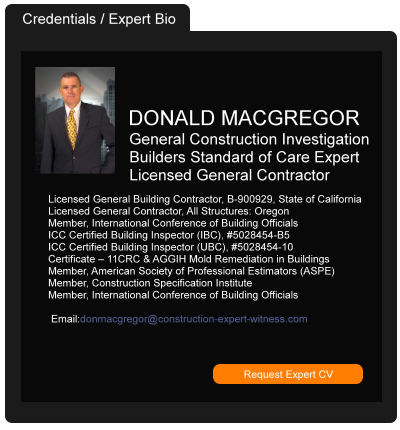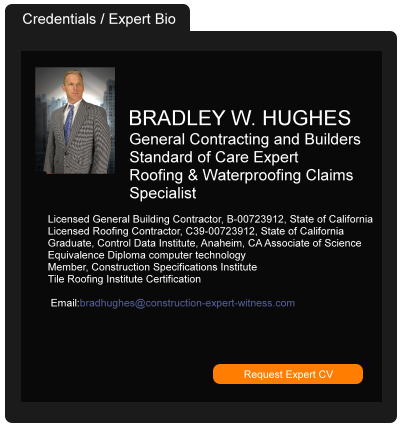Five Frequently Overlooked Points of Construction Contracts
October 18, 2021 —
Craig H. O'Neill - White and Williams LLPThere is no shortage of articles addressing the key points of construction contracts. Just enter that phrase into any internet search engine and you will find plenty. It should go without saying that a construction contract should be in writing, it should clearly identify the scope of work to be performed and the sums to be paid for that work, and it should address the parties’ rights and responsibilities with regard to termination or suspension of the contract, correcting defective work, and handling claims and disputes—just to name a few. Of course, these items should receive their due consideration. Too often, however, other important aspects of the construction contract get shortchanged. This article aims the spotlight on five often overlooked aspects of construction contracts.
Project Schedules
Surprisingly, many construction contracts pay little attention to a central component of any construction project: the project schedule. Many contracts provide the dates of commencement and substantial completion but not much else. With the frequent use of project management techniques such as the Critical Path Method (CPM) and the associated software, it is easier than ever to identify which tasks should be prioritized and identify potential areas of delay. The owner’s contract with the general contractor should clearly define the scheduling methods used and provide measures to keep the parties informed of the progress of the work. By including basic scheduling requirements in the contract documents—such as the submission of “Baseline Project Schedules” (consistent with the contract time provisions), “Schedule Progress Updates” (comparing the progress of the work against the Baseline Project Schedule), and “Schedule Recovery Plans” (when Schedule Project Updates indicate projected delays)—the parties can avoid or reduce disputes over project delays that often lead to litigation.
Read the court decisionRead the full story...Reprinted courtesy of
Craig H. O'Neill, White and Williams LLPMr. O'Neill may be contacted at
oneillc@whiteandwilliams.com
Owner’s Slander of Title Claim Against Contractor Recording Four Separate Mechanics Liens Fails Under the Anti-SLAPP Statute
February 01, 2021 —
Garret Murai - California Construction Law BlogMost mechanics lien actions follow a pretty standard process:
- A mechanics lien claimant, either a contractor subcontractor, material supplier, or laborer, performs work but is not paid;
- Mechanics lien claimant records a mechanics lien on the property in which work was performed; and
- Within 90 days thereafter files suit to foreclose on the mechanics lien.
Sometimes, either before or after a mechanics lien claimant files suit, the owner will record a mechanics lien release bond, in which case mechanics lien claimant files suit against the release bond.
But what if a mechanics lien claimant records a mechanics lien, the owner records a mechanics lien release bond, and the mechanics lien claimant records three different but identical mechanics liens thereafter? Is this even legal?
Read the court decisionRead the full story...Reprinted courtesy of
Garret Murai, Nomos LLPMr. Murai may be contacted at
gmurai@nomosllp.com
The Court of Appeals Holds That Indifference to Safety Satisfies the Standard for a Willful Violation Under WISHA
May 16, 2022 —
Cameron Sheldon - Ahlers Cressman & Sleight PLLCIn March 2022, the Washington State Court of Appeals, Division One, issued Marpac Constr., LLC v. Dep’t of Lab. & Indus., No. 82200-4-I, 2022 WL 896850, at *1 (Wash. Ct. App. Mar. 28, 2022) holding Marpac Construction, LLC (“Marpac”) liable for three willful Washington Industrial Safety and Health Act of 1973 (WISHA) violations pertaining to safe crane operation near energized power lines.
Marpac was the general contractor on an apartment complex construction project in West Seattle. The worksite had high voltage power lines running throughout the site. Seattle City Light had flagged some with a 10-foot offset, but none of the other power lines were flagged. Marpac’s superintendent assumed that the lines were between 26 kilovolts (kV) and 50 kV based on their connection to the lines flagged by Seattle City Light. The superintendent never called Seattle City Light to check the voltage of the lines and the lines remained above ground.
In September 2016, a subcontractor began work on the project’s structural foundation. The subcontractor expressed concerns about working around the power lines, but Marpac promised it was working on mitigation of the power line hazard and directed the subcontractor continue working. At one point, the subcontractor’s employees had to move the crane and concrete forms away from the power lines to allow a cement truck to park in its place. The crane’s line contacted the power lines, causing serious injuries to two of the subcontractor’s employees.
Read the court decisionRead the full story...Reprinted courtesy of
Cameron Sheldon, Ahlers Cressman & Sleight PLLCMs. Sheldon may be contacted at
cameron.sheldon@acslawyers.com
Building 47 Bridges in Two Years
December 23, 2023 —
Dan Sopczak - Construction ExecutiveEvery construction project has its challenges, but some truly push the boundaries of what is achievable in the heavy civil industry. When the Indiana Department of Transportation sought to modernize its I-65/I-70 North Split Interchange in Indianapolis, Indiana, its request for proposals included building 47 new bridges and rehabilitating six additional bridges on an ambitious two-year timeline—905 days to substantial completion.
“Three design-build teams responded to the RFQ, and the same three teams responded to the RFP,” according to INDOT Strategic Communications Director Natalie Garrett. “Proposals were scored and evaluated using the best-value evaluation process defined by INDOT. The score was a combination of a technical proposal score and a price score.”
Reprinted courtesy of
Dan Sopczak, Construction Executive, a publication of Associated Builders and Contractors. All rights reserved.
Read the court decisionRead the full story...Reprinted courtesy of
Build Me A Building As Fast As You Can
March 15, 2021 —
Jodi Stein & Jennifer Dickson - Sheppard Mullin Construction & Infrastructure Law BlogNot your average game of patty-cake! Earlier this week, New York’s First Department, Appellate Division issued its decision related to 200 Amsterdam,[1] overturning the lower court’s decision which would have required 200 Amsterdam to remove several floors of its building in order to comply with zoning. The lower court determined that the NYC Zoning Resolution did not permit a developer to utilize a portion of a tax lot to merge with a neighboring zoning lot.
Known as the “gerrymandered zoning lot,” the developer of 200 Amsterdam included portions of neighboring tax lots in its zoning lot in order to transfer air rights from those portions of tax lots to be utilized in 200 Amsterdam’s 55-story development. The inclusion of partial tax lots in a zoning lot is not expressly discussed in the NYC Zoning Resolution, but was permitted by a 1978 Department of Buildings memo. While challenges to 200 Amsterdam started in 2017, the developer moved forward with the construction of its development under lawfully issued building permits.
Reprinted courtesy of
Jodi Stein, Sheppard Mullin and
Jennifer Dickson, Sheppard Mullin
Ms. Stein may be contacted at jstein@sheppardmullin.com
Ms. Dickson may be contacted at jdickson@sheppardmullin.com
Read the court decisionRead the full story...Reprinted courtesy of
Mold Due to Construction Defects May Temporarily Close Fire Station
October 25, 2013 —
CDJ STAFFFire Station 5 in Chino, California is about to undergo mold remediation. Ruben Martinez, the city’s Public Works Director, expects the station to be closed during remediation. “We’d like to get the firemen out of there so there isn’t any potential infection or worker’s compensation issues,” he said. However, Fire Department Captain Steve Harrison did not think the station needed to be closed. “We are adamant the station stays staffed while the remediation work is completed.”
The mold came about due to problems the station has had with roof leaks since its opening in 1999. The current set of repairs will cost between $12,000 and $25,000, and the city is discussing matters with its insurer to determine who will pay for the repairs. It’ won’t be the original contractor, as the building is past the 10-year limit for construction defect claims. Even if a claim were possible, the contractor who built the building is bankrupt.
Read the court decisionRead the full story...Reprinted courtesy of
Insurance Law Alert: California Supreme Court Limits Advertising Injury Coverage for Disparagement
June 18, 2014 —
Valerie A. Moore and Chris Kendrick - Haight Brown & Bonesteel LLPIn Hartford Casualty Ins. v. Swift Distribution (No. S207172, filed 6/12/14), the California Supreme Court affirmed a 2012 appeals court holding that there is no advertising injury coverage on a theory of trade disparagement if the competitor's advertisements do not expressly refer to the plaintiff's product and do not disparage the plaintiff's product or business. In doing so, the Supreme Court expressly disapproved Travelers Property Casualty Company of America v. Charlotte Russe Holding, Inc. (2012) 207 Cal.App.4th 969 ("Charlotte Russe"), which held that coverage could be triggered for "implied disparagement" by allegations that a retailer's heavy discounts on a manufacturer's premium apparel suggest to consumers that the manufacturer's products are of inferior quality.
In Hartford v. Swift the plaintiff, Dahl, held a patent for the "Multi-Cart," a collapsible cart that could be manipulated into different configurations. When Dahl's competitor Ultimate began marketing the "Ulti-Cart," Dahl sued alleging that Ultimate impermissibly manufactured, marketed, and sold the Ulti-Cart, which infringed patents and trademarks for Multi-Cart and diluted Dahl's trademark. Dahl alleged patent and trademark infringement, unfair competition, dilution of a famous mark, and misleading advertising arising from Ultimate's sale of Ulti-Carts. However, the advertisements for Ulti-Cart did not name the Multi-Cart, Dahl, or any other products beside the Ulti-Cart.
Reprinted courtesy of
Valerie A. Moore, Haight Brown & Bonesteel LLP and
Christopher Kendrick, Haight Brown & Bonesteel LLP
Ms. Moore may be contacted at vmoore@hbblaw.com; Mr. Kendrick may be contacted at ckendrick@hbblaw.com
Read the court decisionRead the full story...Reprinted courtesy of
Construction Companies Can Be Liable for “Secondary Exposure” of Asbestos to Household Members
October 26, 2017 —
Garret Murai - California Construction Law BlogThe history of asbestos regulation in the United States is complicated. Prior to the 1970s, asbestos-containing materials used in construction was widespread.
In 1971, when the U.S. Environmental Protection Agency issued an emissions standard for asbestos as part of the Clean Air Act. In 1972, the EPA extended this regulation to an occupational standard and, over the next decade, the EPA together with the U.S. Occupational Safety and Health Administration and the U.S. Consumer Product Safety Commission issued a wide array of regulations aimed at asbestos.
Read the court decisionRead the full story...Reprinted courtesy of
Garret Murai, Wendel Rosen Black & Dean LLPMr. Murai may be contacted at
gmurai@wendel.com


































































